
Thursday, December 18th, 2025
All About Love - A Powerful Exhibition at the Grand Palais
Cover image: Clairvel Face Forward Gazing 2024
© Entrée to Black Paris
The Grand Palais is inviting visitors to Mickalene Thomas' All About Love "to enter a universe of love, leisure, and liberation, spaces where beauty, intimacy, and self-possession reshape the art historical gaze."
 Grand Palais entrance - Square Jean Perrin
Grand Palais entrance - Square Jean Perrin
© Entrée to Black Paris
At the vernissage (opening) of the exhibition on the evening of Tuesday, December 16, attendees experienced just that.
All About Love is a monographic retrospective that features painting, film, collage, photography, and installations.
 November 1950 (Jet Magazine)
November 1950 (Jet Magazine)
(2021) Rhinestones, acrylic, and oil on canvas
mounted on wood with an oak frame
© Entrée to Black Paris
 Photography
Photography
© Entrée to Black Paris

Hair Portrait #15
(2013) Rhinestones and acrylic on wood paneling
Photo © Entrée to Black Paris
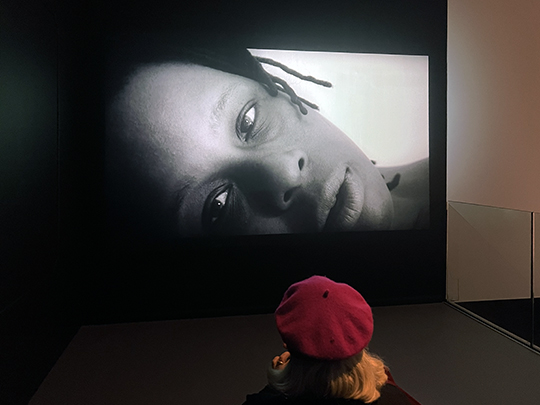
Watching Je
© Entrée to Black Paris
 Memory - 1970s living room installation with photo triptych
Memory - 1970s living room installation with photo triptych
© Entrée to Black Paris
Virtually all of them are bold, vibrant, unapologetic depictions of Black women.
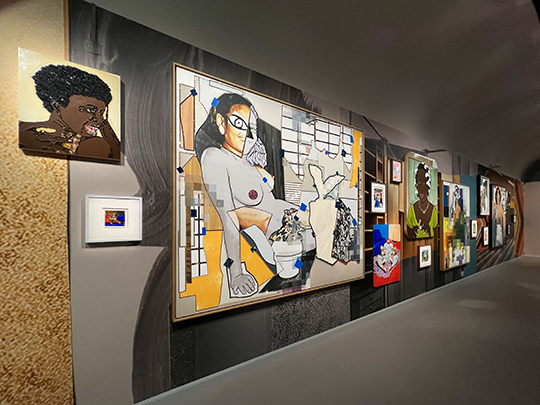 Collages and paintings on second level
Collages and paintings on second level
© Entrée to Black Paris
The exhibition's theme was inspired by bell hooks' book, All About Love: New Visions (1999):
‘to truly love
we must learn to mix
various ingredients
- care, affection,
recognition, respect,
commitment, and
trust, as well as
honest and open
communication.’
bell hooks
The physical space accorded the exhibition is enormous. Occupying two floors of mostly open spaces, many of Thomas' large scale works occupy an entire wall.
 Large scale "Odalisques"
Large scale "Odalisques"
© Entrée to Black Paris
 and Afro Goddess Looking Forward (mixed media painting)_540px wide.jpg) Afro Goddess Looking Forward (artwork on right)
Afro Goddess Looking Forward (artwork on right)
© Entrée to Black Paris


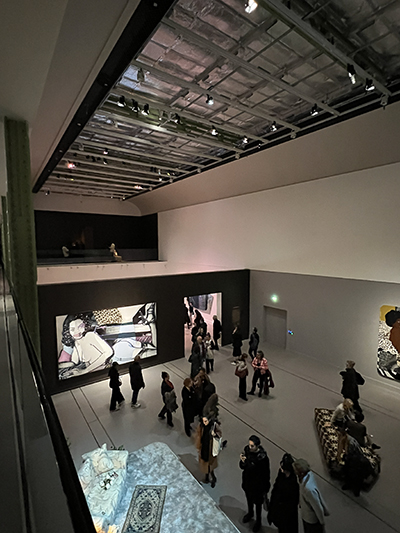 Views from second level of exhibition
Views from second level of exhibition
© Entrée to Black Paris
I first saw Thomas' work in Paris in 2023, when five of her works were shown in an exhibition called Mickalene Thomas : Avec Monet at the Orangerie.
Three of those works—two collages and a film installation—are on display at All About Love in a dedicated room called Avec Monet.
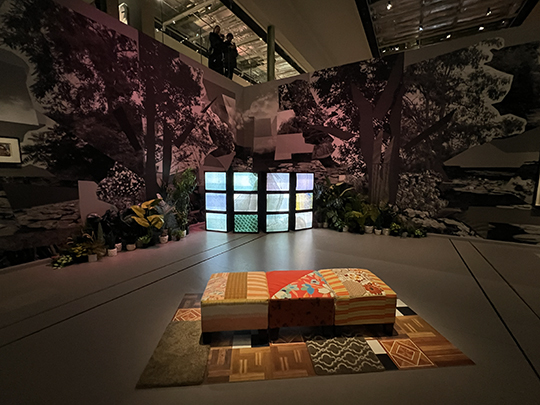 Me as Muse installation
Me as Muse installation
© Entrée to Black Paris
 Monet's House
Monet's House
(2022) Color photography, mixed media, rhinestones, and acrylic
on heat-pressed paper
© Entrée to Black Paris
The collage Le Déjeuner sur l'herbe: les trois femmes noires avec Monet, which was displayed at the Orangerie, evokes Edouard Manet's similarly titled work.
Other themes represented in rooms throughout the exhibition include "Icons," "Resist," and "Je (I)."
There are many places to sit and converse throughout the exhibition.
 Bean bags in the Wrestlers' room
Bean bags in the Wrestlers' room
© Entrée to Black Paris
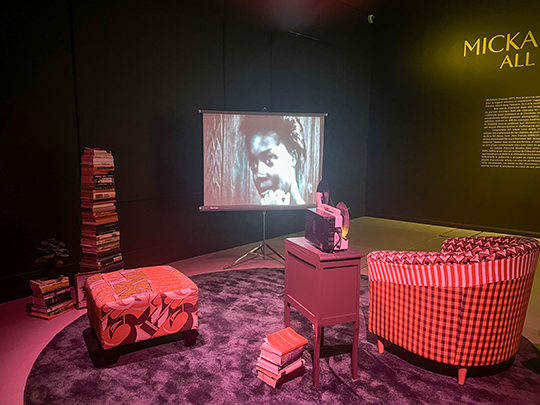 Screen Test - Installation in first room
Screen Test - Installation in first room
© Entrée to Black Paris
![]() Icons installation
Icons installation
© Entrée to Black Paris
Interestingly, stacks of books are available to peruse in multiple areas as well.
![]() Icons installation - books
Icons installation - books
© Entrée to Black Paris
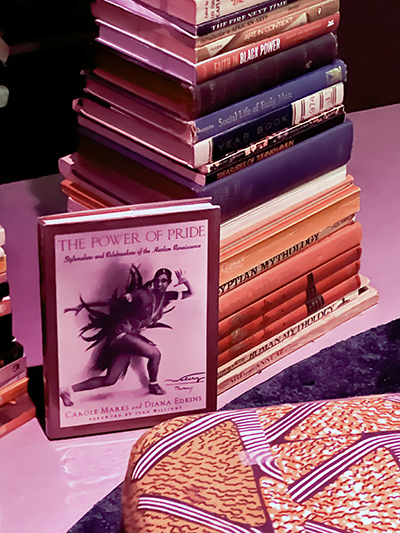
Screen Test installation - books
© Entrée to Black Paris
The artist was present for much of the evening, and not surprisingly, attendees flocked to meet her.
 and fans_540px wide.jpg) Mickalene Thomas with group
Mickalene Thomas with group
© Entrée to Black Paris
I got to meet her as well.
 L to R: Monique Y. Wells, Mickalene Thomas, and Alana Manga
L to R: Monique Y. Wells, Mickalene Thomas, and Alana Manga
© Entrée to Black Paris
All About Love will be on display from December 17, 2025 through April 5, 2026.
To reserve tickets, click HERE.

 Our Walk: Black History in and around the Luxembourg Garden - Click here to book!
Our Walk: Black History in and around the Luxembourg Garden - Click here to book!